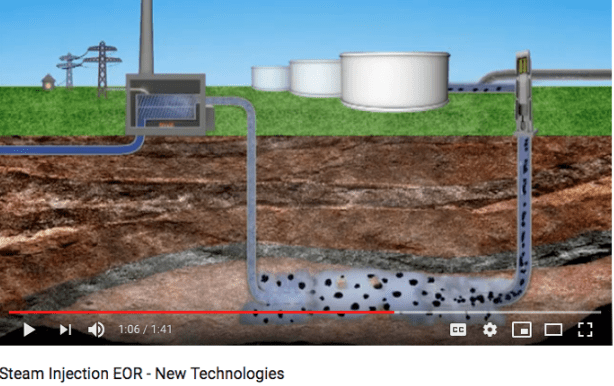Oil Production 101
Fracking. Cyclic steam injection. Acidization. Extraction. Sweet crude.
Not an expert on all these terms? Here’s a crash course on what you need to do about how Santa Barbara County produces its oil.
Cyclic Steam Injection
The 750 oil wells collectively proposed by ERG, AERA, and PetroRock for Cat Canyon in northern Santa Barbara employ an oil extraction technique called cyclic steam injection. The method involves superheating large amounts of fresh water to produce steam that is pumped underground. Santa Barbara Oil is particularly thick and heavy so it doesn’t come to the surface without liquifying it and then pumping it out. The steam heats up the oil, in a sense melting it so as to reduce its viscosity, allowing for easier extraction. While both resource (water) and energy intensive, the method also increases risk to the oil field workers. Cyclic steam injection is believed to have contributed to the formation of a sinkhole that took the life of a Chevron facilities manager in 2011. Other issues arising from cyclic steam injection involve toxic seepage and well explosions. A series of explosions at the oil fields employing cyclic steam injection in Kern County led to a well being decommissioned by the California Division of Oil, Gas, and Geothermal Resources. All steam injection within 500 feet of the explosive well was also halted.

The process is often used to extend the life of older oil wells, accessing more viscous oil that more conventional methods cannot. Reopening old wells that may not have been drilled safely or according to today’s stricter environmental regulations carries with it inherent dangers, including the collapse of underground reservoirs. The proposed cyclic steam injection oil wells in Cat Canyon also pose a direct threat to the Santa Maria Groundwater Basin. This basin is an essential resource supplying potable water to the water scarce northern Santa Barbara County.
Oil Processing
Oil processing begins after the extraction process. In the Cat Canyon case, the crude oil is still so thick and heavy that it must be mixed with lighter crude trucked in from Bakersfield before it can be transported. The crude oil is transported, via pipeline or trucks in Santa Barbara County, to a treatment plant. One part of processing the crude extracted through cyclic steam injection involves separating the waste water from the oil. The contaminated waste water is either pumped back underground or dumped.In southern Santa Barbara County, there are two consolidation sites for oil and gas. The facilities produce oil, propane, butane, and sulfur products for sale and fuel gas for process needs and power generation. At the treatment plants oil and water are separated, leaving toxic water as a waste product. This mixture is dumped offshore, potentially polluting the Santa Barbara Channel.
The refining process is also ecologically harmful and a threat to public health. By-products from oil refineries contain toxic concentrations of ammonia, sulphides, phenols, and hydrocarbons into our air and water. These toxins can lead to harmful health effects including increased asthma rates, skin irritations, nausea, cancers, and death. People who live near refineries report higher rates of cancer, asthma, and other respiratory conditions.
Not only do refineries put human and environmental health at risk, they are extremely energy intensive and inefficient. The energy return on investment (EROI) of oil production has rapidly dropped in recent decades, while the EROI for renewables has double and even tripled depending on the technology. Green energy is the future and Santa Barbara County should be reducing its fossil fuel production to live up to its environmentalist credentials.